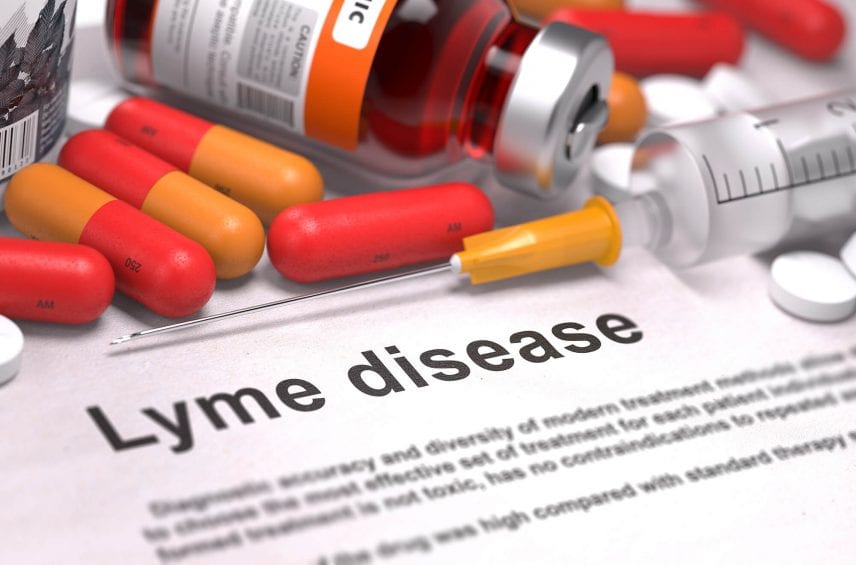The progression of Lyme Disease operates on a timeline that begins with the date of the bite. Left untreated, Lyme Disease can cause severe symptoms. Those who spend a lot of time in rural or heavily wooded areas are advised to wear long sleeve shirts and pants over shorts to minimize exposed skin when hiking, fishing, or camping.
If you’re at increased risk of being exposed to ticks, the tick control experts at Pointe Pest Control can help secure your home against these awful creatures.
What Is Lyme Disease?
Lyme Disease is a bacterial infection that is spread by ticks. The scientific name for this bacterium is Borrelia burgdorferi. The majority of cases can be effectively treated using a course of antibiotics but the symptoms are unpleasant, to say the least.
The Early Stages Of Lyme Disease
Symptoms won’t present until about three days after the tick bite. Afterward, you will feel flu-like symptoms. These include:
- Fever,
- Chills,
- Headache,
- Fatigue,
- Muscle cramps,
- Joint pain, and
- Swollen lymph nodes.
In addition to the flu-like symptoms, 70% to 80% of patients exhibit what is known as erythema migrans (EM) rash. On average, the rash forms about a week after the initial tick bite. Gradually, the rash begins to expand and can reach up to 12 inches in diameter. As the rash expands, it becomes less red at the edges leading to the characteristic bullseye appearance.
The Later Stages Of Lyme Disease
As Lyme Disease progresses, which it does in cases where the bullseye rash is either not present or not in an area where it’s evident, the symptoms grow worse. Common symptoms include:
- Severe headaches,
- Stiffness in the neck and other major joints,
- Arthritis and severe joint pain in the knees and shoulders,
- Facial palsy (facial paralysis or drooping of the muscles),
- Pain in the tendons, muscles, and bones,
- Heart palpitations,
- Episodes of dizziness,
- Shortness of breath,
- Inflammation of the brain and spinal cord (encephalitis),
- Tingling in the extremities,
- Nerve pain, and
- Difficulty remembering things.
Treating Lyme Disease
Lyme disease is known to be a bacterial infection and can thus be treated with antibiotics. There are three main antibiotics used to treat Lyme Disease. Those are:
- Doxycycline,
- Amoxicillin, and
- Cefuroxime axetil.
These are taken over the course of 10 to 21 days depending on the size of the patient. There are other options available for those who are either allergic to penicillin-based antibiotics or otherwise intolerant to the big three.
Chronic Lyme Disease Syndrome
In some people, the symptoms of Lyme Disease persist even after the bacteria has been eradicated. This is called Chronic Lyme Disease Syndrome (CLDS) or Post-Treatment Lyme Disease Syndrome. Roughly 10% to 20% of those treated with the recommended antibiotics will continue to experience some symptoms after completing treatment. Symptoms will include:
- Fatigue,
- Joint pain,
- Sleep disturbances,
- Muscle aches, and
- Cognitive problems.
There is no medical consensus on why some patients don’t fully recover. However, risk factors include how far the disease is allowed to progress and not being treated with one of the three main antibiotics.
Avoiding Lyme Disease
The best way to avoid Lyme Disease is to avoid areas where deer ticks live. However, not all of us can do that. Some of us work outdoors or in high-risk areas while others simply appreciate the rustic beauty of nature. For those, there are simple measures you can take to avoid tick bites.
If you’re going to spend time in heavily wooded areas, wear long sleeve shirts and pants as opposed to shorts to avoid exposure to ticks.
Additionally, ticks need to stay on your body for at least 36 to 48 hours to transmit Lyme Disease. If you are going to be spending time in tick-ridden areas, be sure to shower afterwards and inspect your body. You should also clean your clothing. If you’re bringing your dog, make sure he gets a bath too. If the tick is not allowed to stay on your skin, it reduces the chance that you will be exposed to Lyme Disease.
Lastly, there are a number of different kinds of tick repellents that you can find.
Talk To The Top-Rated Tick Control Experts At Pointe Pest Control
Pointe Pest Control can help secure the area around your home and prevent making your own back year a tick-friendly environment. Talk to us today.


